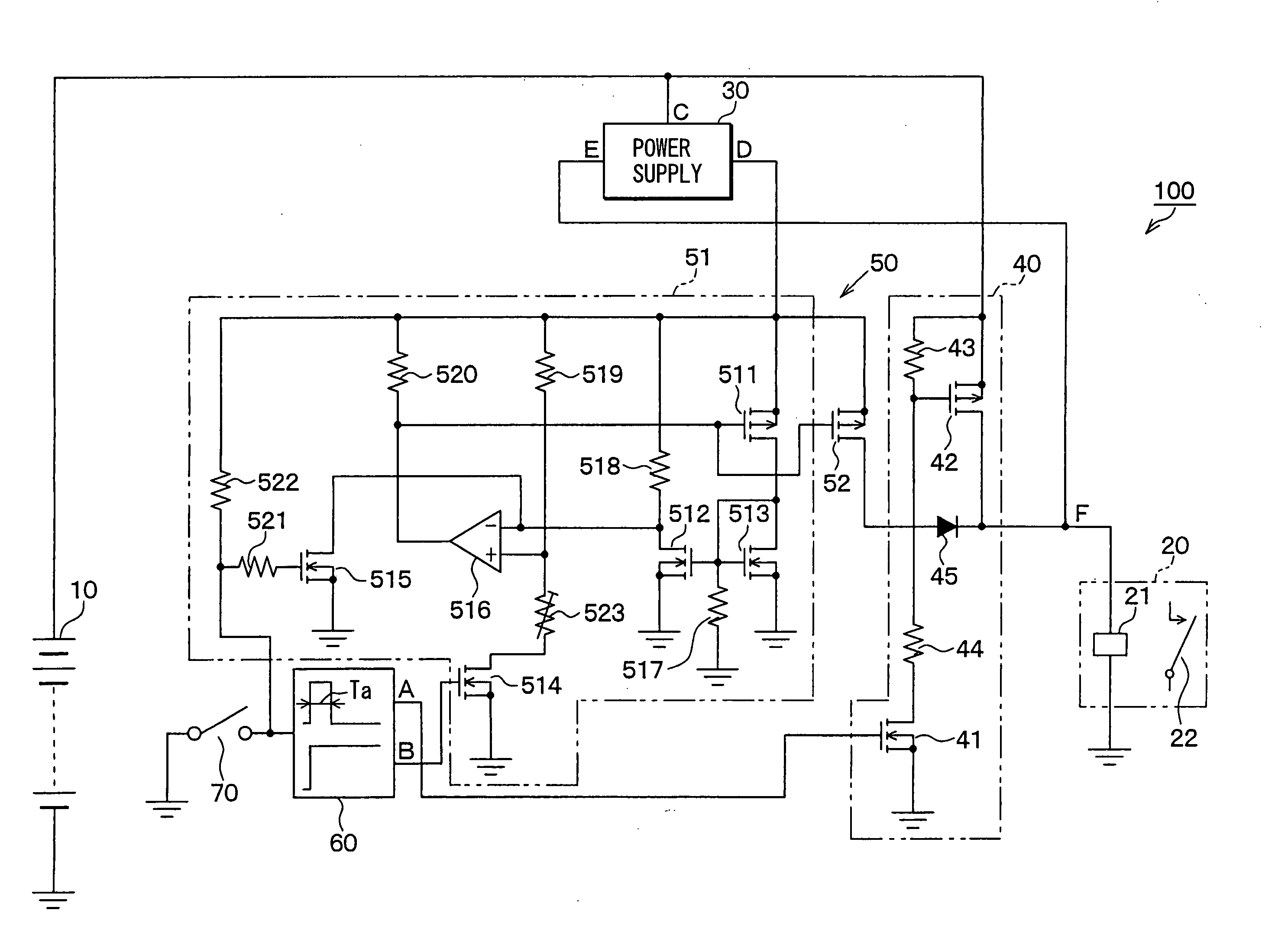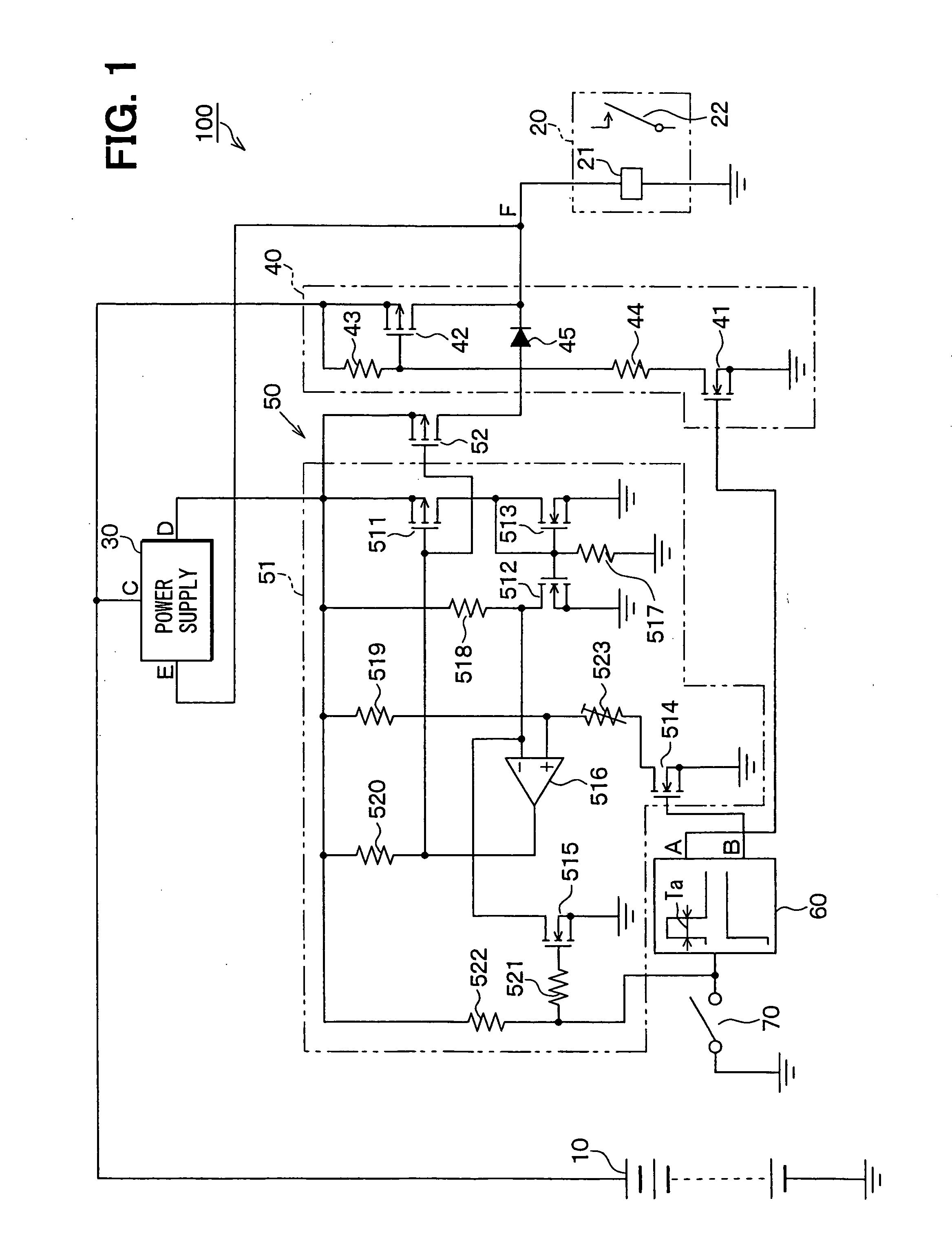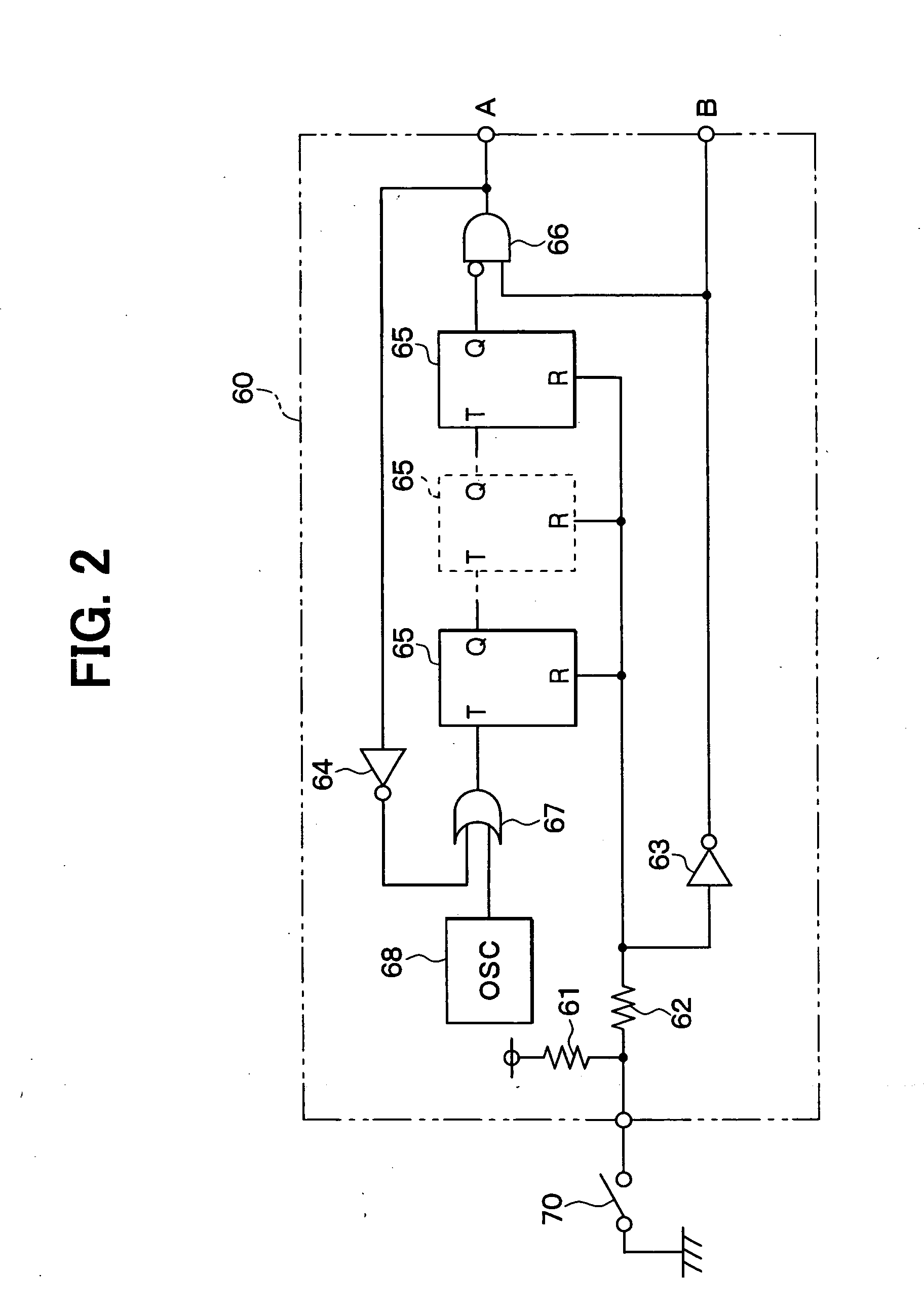Constant current relay drive circuit
a relay drive and constant current technology, applied in relays, basic electric elements, electric devices, etc., can solve the problems of power loss, increase in power consumption and heat generation in the relay drive section, and high drop, so as to reduce power consumption and heat value
- Summary
- Abstract
- Description
- Claims
- Application Information
AI Technical Summary
Benefits of technology
Problems solved by technology
Method used
Image
Examples
first embodiment
[0023] Reference is made to FIG. 1, which shows a circuit diagram of a relay drive circuit 100. The relay drive circuit 100 is for driving a relay 20 for energizing a load (i.e., vehicular headlight). The relay 20 has a relay coil 21 and a relay contact 22.
[0024] The relay drive circuit 100 includes a power supply circuit 30 for a low-holding energization, an initial energization circuit 40, a low-holding energization circuit 50, and a control circuit 60.
[0025] The power supply circuit 30 produces a constant voltage (e.g., 4 to 6.5 volts) lower than a voltage (12 volts) of a battery 10. The initial energization circuit 40 performs an initial energization such that the battery 10 provides an initial energizing voltage to the relay coil 21 to hold the relay contact 22 in a closed position. The low-holding energization circuit 50 performs the low-holding energization such that the constant voltage provides a constant current to the relay 20 to hold the relay contact 22 in a closed po...
second embodiment
[0061] Reference is made to FIG. 5, which shows a circuit diagram of a relay drive circuit 300. The relay drive circuit 300 has multiple relay drive circuits (hereinafter, “drive channels”) for driving multiple relays 20.
[0062] The relay drive circuit 300 includes a power supply circuit 30, a power supply switching circuit 110, a reference constant current circuit 120, a control circuit 130, and a feedback circuit 140. The relay drive circuit 300 further includes, initial energization circuits 150, low-holding energization circuits 160, relay-off circuits 170, and relay drive transistors 180, which are provided to each drive channel of the respective relays 20.
[0063] The initial energization circuit 150, the low-holding energization circuit 160, and the relay-off circuit 170 are each configured as an analog switch. When the circuits 150-170 receive a control signal of a high level from the control circuit 130, there is conduction between the input and the output of the respective ...
PUM
 Login to View More
Login to View More Abstract
Description
Claims
Application Information
 Login to View More
Login to View More - R&D
- Intellectual Property
- Life Sciences
- Materials
- Tech Scout
- Unparalleled Data Quality
- Higher Quality Content
- 60% Fewer Hallucinations
Browse by: Latest US Patents, China's latest patents, Technical Efficacy Thesaurus, Application Domain, Technology Topic, Popular Technical Reports.
© 2025 PatSnap. All rights reserved.Legal|Privacy policy|Modern Slavery Act Transparency Statement|Sitemap|About US| Contact US: help@patsnap.com



